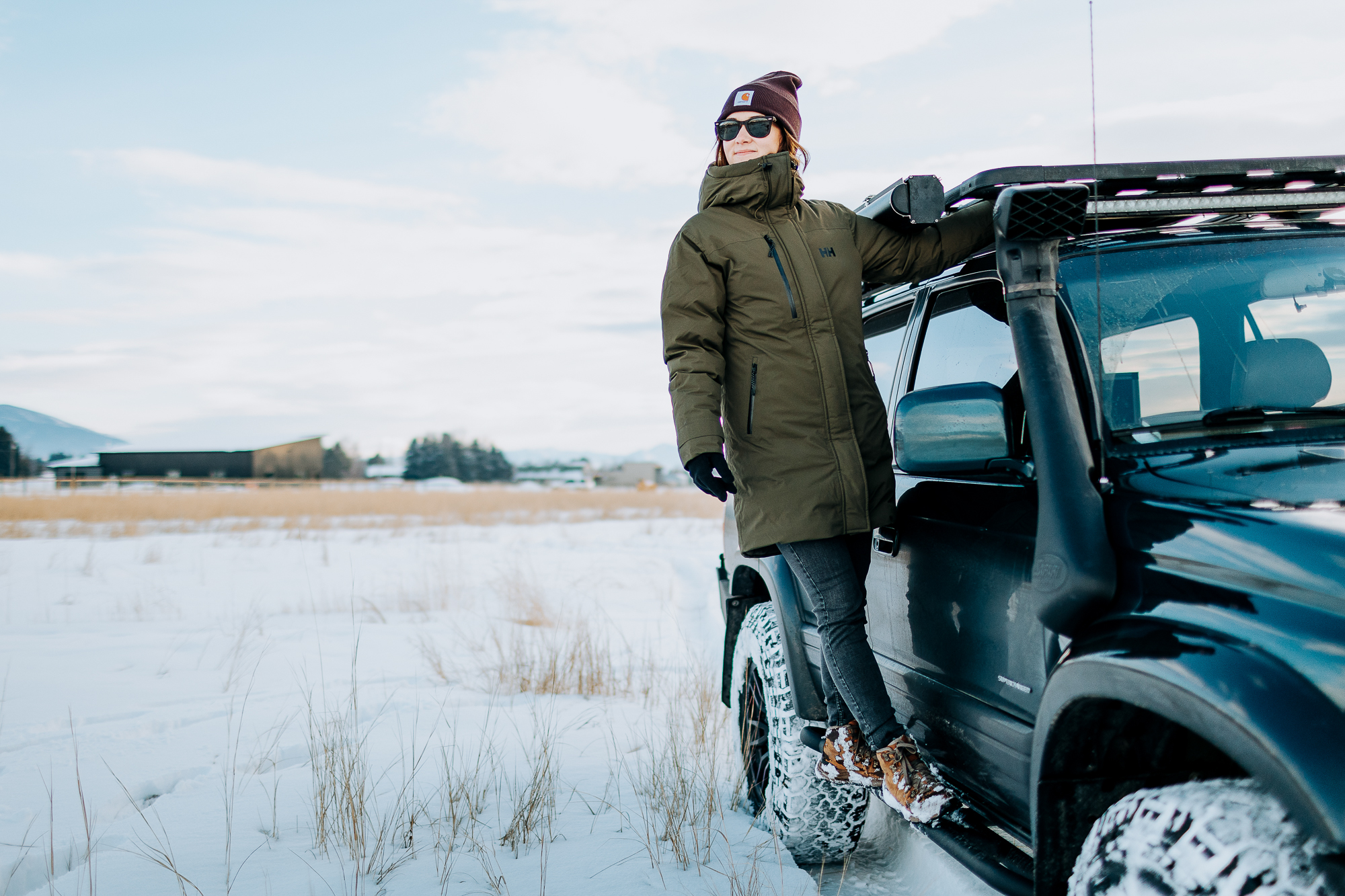Photography by Richard Giordano
Polar nights, deep fjords, the Arctic tundra, midnight sun, and boreal forests filled with silver birch and lichen form the Nordic playground, where people pride themselves on spending time outdoors in all seasons. The culturally learned rhythm of frilufstliv or free-air life aptly sums up the Nordic community’s connection with nature. Coined by Norwegian playwright and poet Henrik Ibsen, the term (pronounced free-looft-sleeve) is widely understood throughout Denmark, Norway, Sweden, Finland, and Iceland, as well as the Faroe Islands, Greenland, and Åland, as the freedom we feel in nature, a spiritual connectedness with the landscape.
The feeling of intersectionality with nature and the desire to spend time outdoors, even when frightful, is reflected in the outdoor gear and sustainability practices established by Nordic brands. Prioritizing long-lasting equipment and clothing, many Nordic companies emphasize repair and recycling programs, such as Norrøna’s RE initiatives and Helly Hansen’s commitment to using recycled and responsible materials, including wool, cotton, and down. Gear also has to be able to stand up to forays into harsh and unpopulated wilderness. I’ve always viewed Nordic outerwear as superior because it comes from the North. So, I put some items to the test. After all, as the Norwegians say, Det finnes ikke dårlig vær, bare dårlige klær. Or, as we would say, There is no such thing as bad weather, only bad clothes.
Helly Hansen Adore Helly Tech Parka
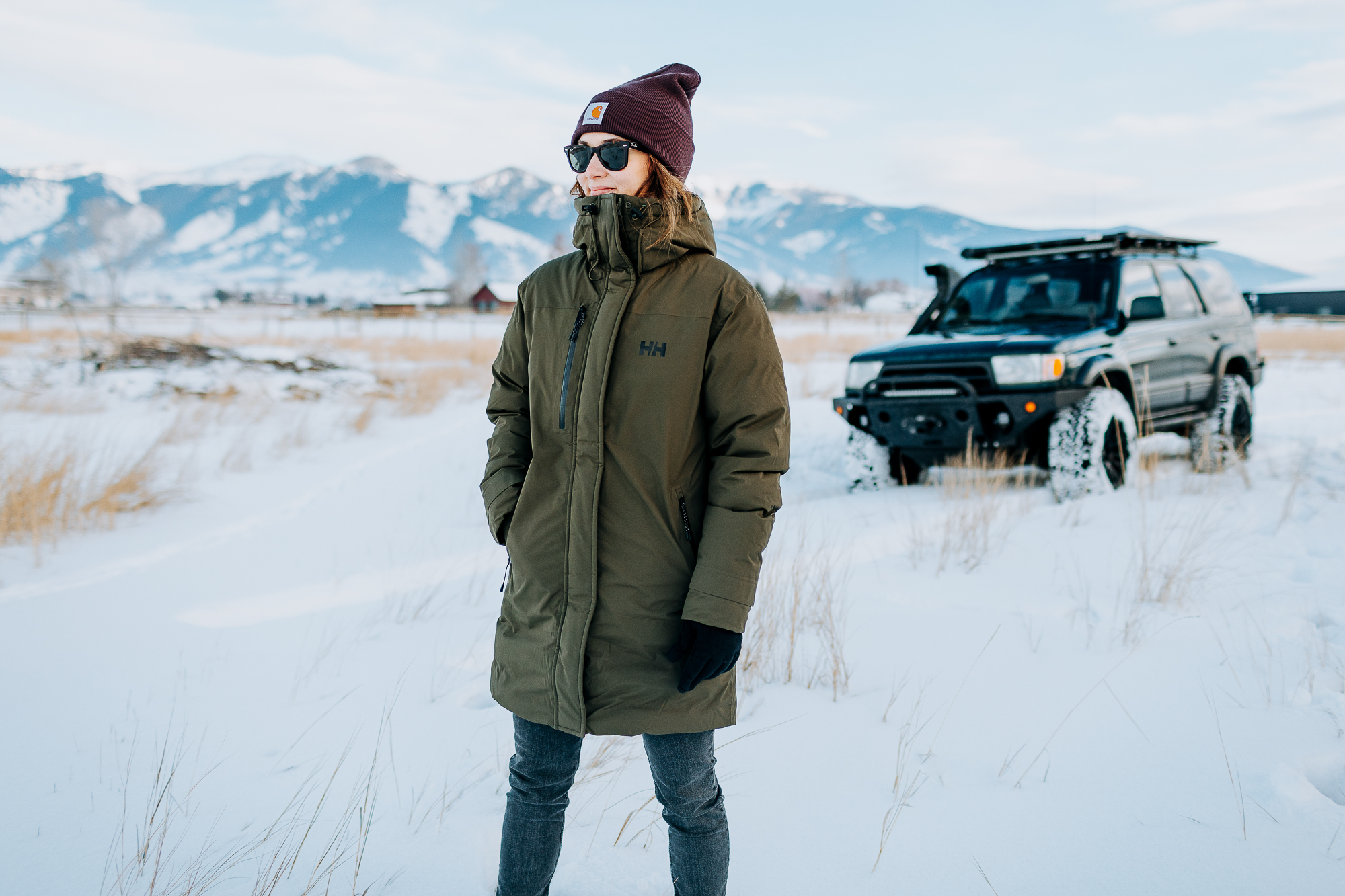
While Helly Hansen’s Adore parka was designed for urban winter life, its high windproof, waterproof, and durability rankings lend well to the overland traveler whose sights are set on cold-weather travel. A parka should provide as much coverage as possible while leaving room for movement. Winter travel often requires scraping windshields and roofs of ice and snow, and I’ve found that long jackets can impede quick movements like a tight skirt. Fortunately, the Bluesign-certified Adore strikes a good balance as the jacket continues well after the zipper ends and is secured with a button at the bottom of the hem.
Winter weather can vary greatly depending on climate, so I appreciate that the Adore parka offers highly waterproof protection (the shell and lining are 100 percent polyamide) with recycled polyester synthetic insulation to keep you warm, whether in a damp or dry cold. I was pleased with the coziness of this jacket and its generously sized flannel-lined pockets during a cold snap in Bozeman, Montana, that neared -31°F. The fold-up reflective strips along the cuffs add a thoughtful touch and would be useful during dark, chilly mornings and evenings.
It’s hard to find fault with the Adore parka, but if pressed, the hood could be slightly more generous in front as it leaves the forehead exposed without a beanie or toque. Overall, though, I’m quite happy to have Helly Hansen’s Adore parka as part of my winter kit—hopefully, for decades to come.
$400 | hellyhansen.com
Fjällräven Abisko Winter Stretch Trousers
Featuring a brushed interior lining and a double weave four-way stretch fabric, Fjällräven’s Abisko soft-shell trousers are suitable for the cold. Made from a recycled polyamide, polyester, and elastane blend from plastic PET bottles, the pants are produced without PFAS, adhering to the company’s long-term sustainability goals. They are also soft, warm, and stretchy (thanks to articulated knees and an elasticated waist)—exactly what you want in good cold-weather pants.
I’m a fan of the details: two zippered pockets and one handy one on the leg, adjustable ankle cuffs with cinches to adjust the pants to your choice of footwear or sock thickness (or to keep out the snow), and a high waist to prevent chilly drafts and maintain that stylish look. Thankfully, the Abisko trousers also feature belt loops, as I needed a bit of a cinch. They also work well as a shell worn over leggings or a base layer if an extra bit of warmth is warranted and the size allows for it.
I put these to the test during wintertime in interior British Columbia, Canada, donning the pants on walks through the woods and windy lakeside strolls filled with swirling snow. They also wear well during early spring or fall mornings at camp, where I wasn’t afraid to rough them up a bit. Overall, Fjällräven’s Abisko winter stretch trousers deliver as promised.
$275 | fjällräven.com
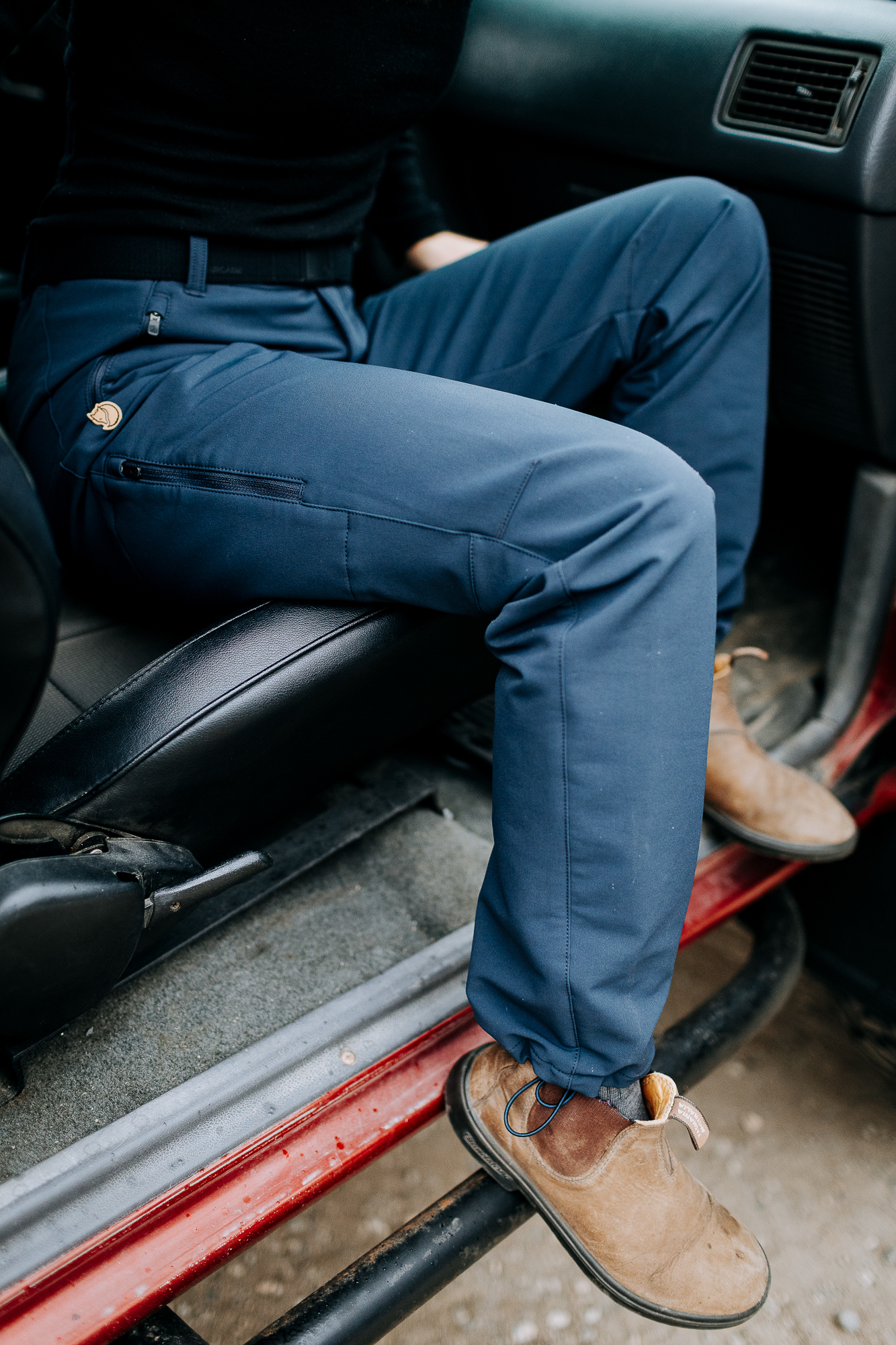
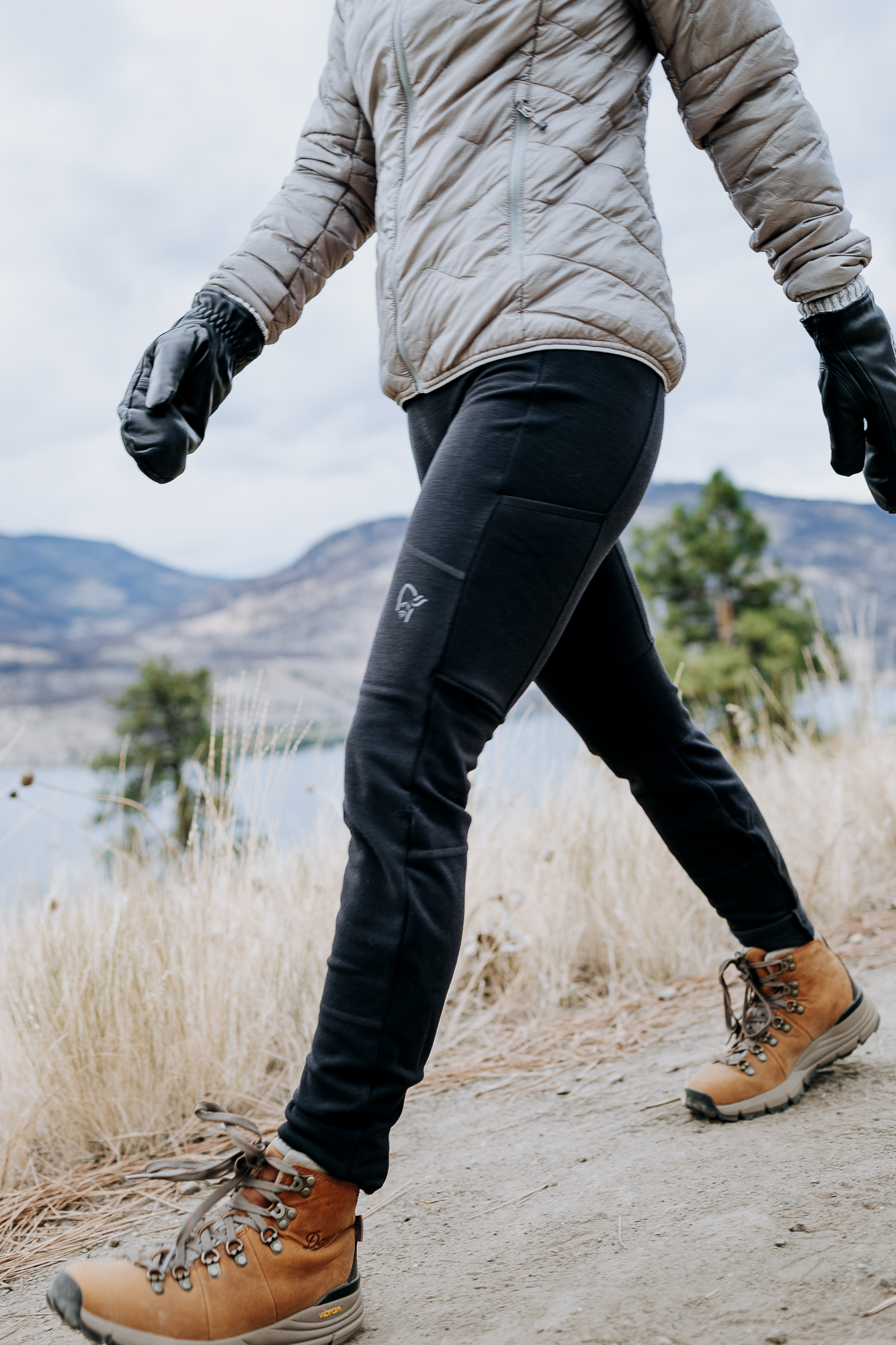
Norrøna Femund Warmwool Flex2 Tights
After donning Norrøna’s warmest tights, the Femund Warmwool Flex2s, I will never go back to wearing regular leggings in the wintertime. The soft thermal interior is made of 100 percent woven recycled polyester, which offers an all-way stretch and is topped with a mix of 78 percent recycled polyester, 18 percent wool, and 6 percent elastane. As soon as I unwrapped these tights, I noticed the luxuriousness of the interior lining, which is very comfortable without compromising on fit or stretch. My only gripe with the Flex2s is they are too long for my shorter legs and bunch up from the knee down.
Otherwise, the Flex2s performed well in the odor reduction and temperature regulation departments. I like the high-waisted slim fit, elasticated waist, zippered waist pocket, and two lined side pockets. Suited to winter trail running and general outdoor adventures such as mountain biking and hiking, the Femund Warmwool leggings work well for the multi-faceted nature of overlanding, which often sees us doing everything from setting up camp to sightseeing, snowshoeing, and more.
Although the tights are thicker than your usual merino wool bottom, I tried them as a base layer underneath shell pants or technical pants with room on ultra-cold days. I also slept in them, just for fun. This should probably be reserved for those who run cold at night in sub-zero temps, as those who get hot at night will likely overheat—Norrøna brought the fire with these Femund tights.
$200 | norrona.com
Stellar Equipment Mid Jacket 2.0
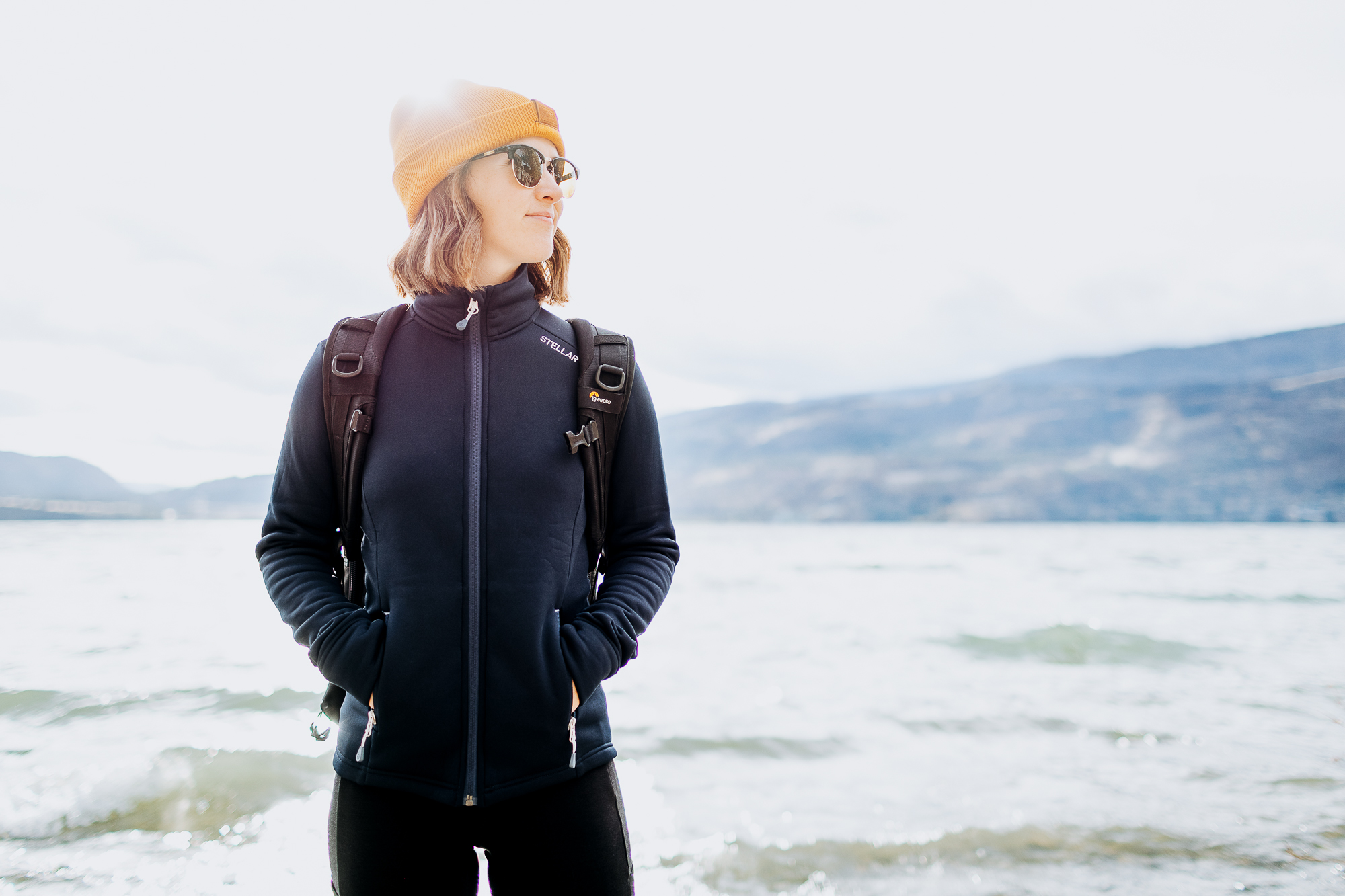
Fredrik Dahl and John Crawford-Currie founded the Swedish-based, direct-to-consumer brand Stellar Equipment. With significant product design and development experience with international brands like Peak Performance and The North Face, Dahl and Crawford-Currie have found success with Stellar’s top-selling products, many of which have remained unchanged for nearly a decade. Their 2.0 versions were reformulated only after receiving feedback from thousands of users, and the Mid Jacket 2.0 is one of those products.
As soon as I zipped up the Mid Jacket 2.0, it felt like I had joined an Olympic cross-country ski team. The jacket is streamlined with intentionally placed branding, two zippered hand pockets, a high collar with a chin guard triangle, and thumb holes. Made from 55 percent recycled fibers, Stellar’s jacket is layerable, comfortable, and very warm. Designed to be the perfect mid-layer for any outdoor activity, Stellar says the fleece is suited to ski-touring, free-skiing, and alpinism in the winter and climbing, hiking, trekking, and biking in the summer. If there’s one thing we love as overlanders, it’s versatility.
While I find the Stellar Mid 2.0 too warm for summer pursuits (except perhaps for early mornings and nights in places like the Canadian Rockies), the jacket can handle chilly winds and wintertime bonfires like a champ. While I didn’t have the opportunity to test the Mid Jacket 2.0 for skiing purposes, it delivered on all promises during hiking, trekking, and camping pursuits, no matter whether layered or worn on its own.
$160 | stellarequipment.com
Kari Traa Himle Mittens
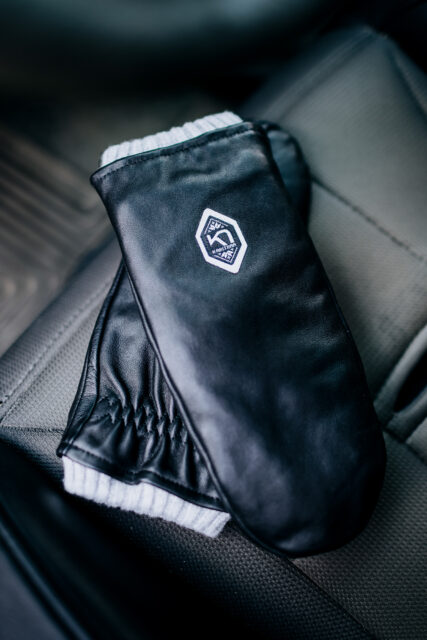
During training and competition, three-time Olympic moguls medalist Kari Traa crocheted and knitted her own beanies. At the time, ski sponsors only designed clothing for male athletes, so Traa’s colorful accessories became so popular with friends and skiers that she turned the hobby into a brand. Today, the women’s sports brand continues to be inspired by Norwegian traditions, nature, and childhood memories from Kari’s family farm in Voss.
Kari Traa’s line includes everything from base layers to jackets, shorts, and leggings. I gave the Himle mittens a whirl, which feature a fleece-lined interior made of polyester and wool with a leather exterior. Forty-six percent of Kari Traa’s polyester is recycled and GRC-certified, and the brand hopes to reach its goal of 80 percent by 2030. I often prefer mittens over gloves because my fingers get cold easily, but mittens tend to restrict movement (grabbing, pinching, or doing anything tactile). Fortunately, the Himle mittens fit nicely while providing the ability to transport water jugs, undo rooftop tent latches, and open truck doors.
The fleece interior kept my fingers warm during cold snaps, while the leather exterior is classic and can pair with just about everything. For those who prefer gloves, Kari Traa also offers a pair of Himles made from the same materials in black, white, and beige. The only downside is you’ll need to keep these babies pristine, as care instructions forbid washing, bleaching, tumble drying, ironing, and dry cleaning.
$76 | karitraa.com
Editor’s Note: This article was originally published in Overland Journal’s Gear 2025 Issue.
Our No Compromise Clause: We do not accept advertorial content or allow advertising to influence our coverage, and our contributors are guaranteed editorial independence. Overland International may earn a small commission from affiliate links included in this article. We appreciate your support.


